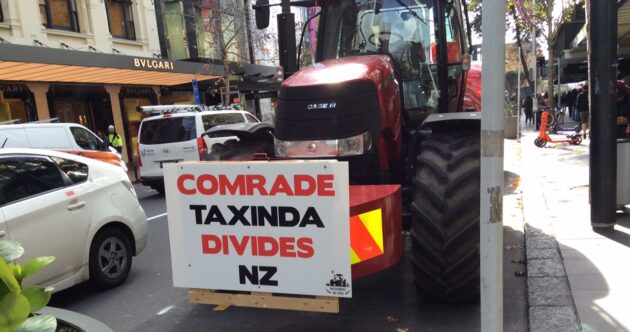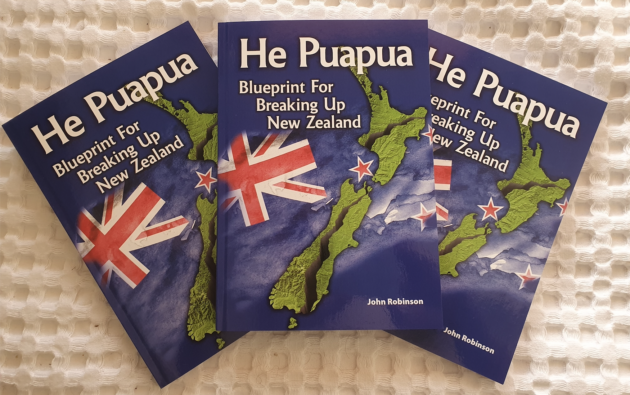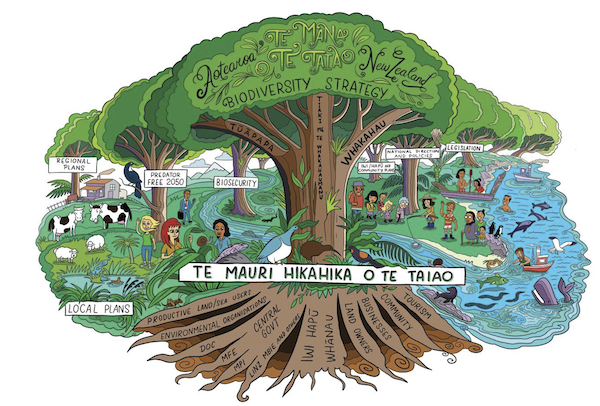Susan Short
Secretary
Democracy Action
It takes a lot to get middle New Zealand riled up enough to protest, but the Groundswell movement has tapped into discontent with the Government over a raft of issues. The organisers were blown away by the overwhelming support they received for their ‘Howl of Protest’ action, and very pleased by the reportedly unprecedented turnouts in 55 towns and cities across the country – it is estimated 30-40 thousand people, with their tractors, utes, and dogs, hit the streets nationwide. This is no mean feat – congratulations to all involved!

One issue causing concern involves recommendations in the He Puapua report. Despite protestations from Prime Minister Ardern that it is not government policy, there is mounting evidence that plans are being enacted to progressively implement the recommendations, which includes ‘breaking’ our constitutional arrangements to replace democracy with an inequitable constitution, giving a group of citizens claiming to represent the 16.7 per cent of the population with Maori heritage 50 per cent of the decision-making power – or more in some cases.
We are seeing this in the Education, Health, and the Three Waters reforms, and in Te Mana o te Taiao – the Government’s proposed strategy on indigenous biodiversity. This strategy document would require people at all levels – central and local government, industry, non-government organisations, scientists, landowners, communities, and individuals – to partner with whanau, hapu, iwi. This applies to all land – including private land – as well as all freshwater, estuaries and wetlands, and the marine environment from the coastline to the outer edges of the Exclusive Economic Zone and the extended continental shelf.

Author John Robinson has recently published a book clarifying the threat to the rights and liberties of all ‘other’ New Zealanders posed by He Puapua, He Puapua – Blueprint for Breaking up New Zealand. This book explains the full implications of implementing the recommendations in the report. I have not read it yet but am looking forward to finding out what John has to say. Copies can be ordered from Tross Publishing.
Other recommended reading on this issue includes the paper by Elizabeth Rata, ‘The Road to He Puapua – Is there really a Treaty partnership?’, in which Elizabeth examines the concept of a Treaty of Waitangi partnership and describes the path to the policy of now including the Treaty principles in most legislation.
Proposed Biodiversity Strategy – Another Opportunity to Implement He Puapua

One of the recommendations in He Puapua consists of a joint sphere of management and governance of resources. This policy is being promoted in the government’s Te Mana o te Taiao Aotearoa New Zealand Biodiversity Strategy. Te Mana o te Taiao is a 30-year plan to protect and restore New Zealand’s biodiversity, covering all domains – land, fresh water, estuaries and wetlands, and the marine environment from the coastline to the outer edges of the Exclusive Economic Zone and the extended continental shelf. This includes all land – public, private, and Maori-owned land.
The strategy involves upholding the principles of the Treaty of Waitangi, seeing this as an essential part of Te Mana o te Taiao, with treaty partners working together towards a shared vision for nature, and to ensure matauranga Maori as well as rangatira (chief) and kaitiaki (guardian) obligations are actively protected.
The plan requires people at all levels – central and local government, industry, non-government organisations, scientists, landowners, communities, and individuals – to partner with whanau, hapu, iwi in the protection and restoration of New Zealand’s biodiversity, and to ensure matauranga Maori is elevated to an equal standing with other forms of knowledge.
Maori will lead the delivery of many biodiversity restoration projects, as well as and partnering with the government on decisions about taonga species and the land, sea, and waterways with which they associate.
A key objective is for matauranga Maori to be invested in and have “equal mana to knowledge gained through other scientific disciplines and ways of seeing/understanding the world”. You could think of it as two equally sized spheres, coming together in partnership, with the protection and restoration of biodiversity at the centre. One sphere would represent whanau / hapu / iwi, and the other central government / local government / industry / non-government organisations (NGOs) / scientists, landowners / communities / individuals. This structure is a microcosm of the intention for the future governance of New Zealand, as proposed in both the He Puapua and Matike Mai reports.

The government is now requiring all Ministers to review those aspects of their portfolios that relate to the protection and promotion of biodiversity or that pose risks to biodiversity and ensure that the relevant government agencies are engaged in implementing Te Mana o te Taiao strategies. These include the Ministry for Primary Industries, Ministry for the Environment, Environmental Protection Agency, Department of Conservation, Land Information New Zealand (including the Overseas Investment Office), Ministry of Business, Innovation and Employment, plus Regional and Local Councils.
The next phase of strategy development will be to collaboratively design an implementation plan for 2021–2022.
Please share so others can discover The BFD.

